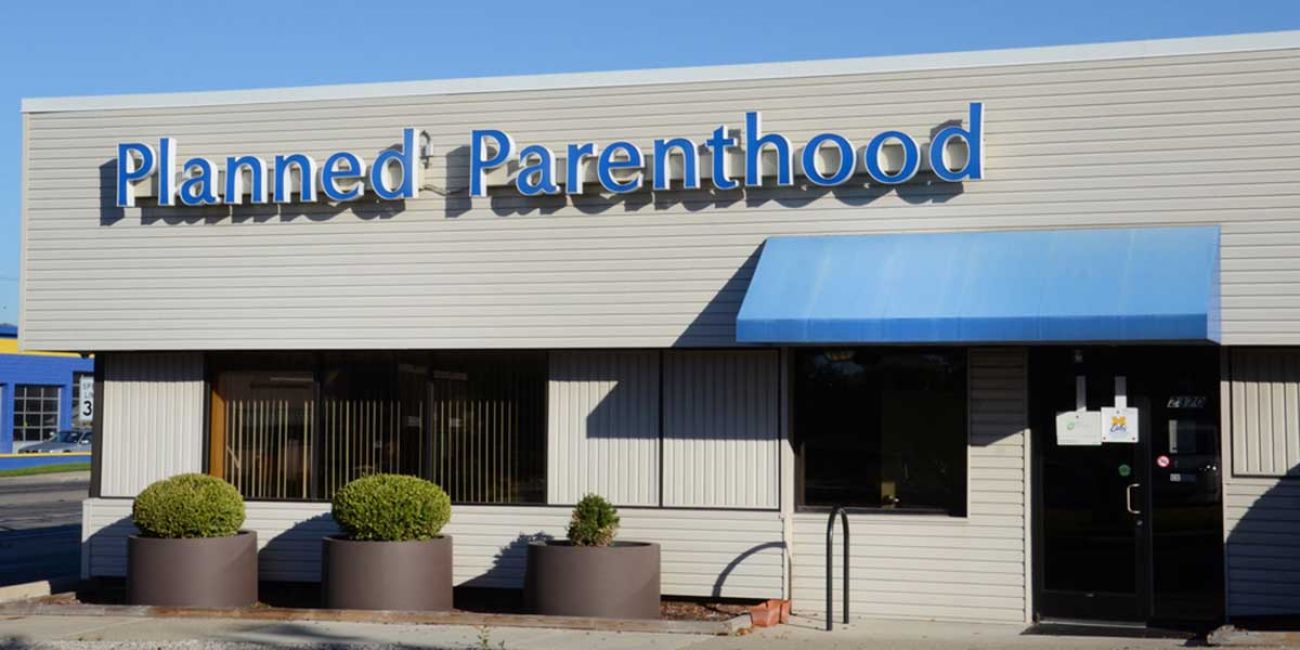In Michigan: Who wins, who loses if GOP efforts slay Obamacare

















Two visions for health care in Michigan – and the nation – had been on a collision course in the GOP Congress-led effort to pass a health insurance bill that would unravel much of the Affordable Care Act often known as Obamacare. Republican Senate leadership, which had pushed to hold a vote this week, now appears to have given in to defections from key Republican Senators. It remains unclear if so-called McConnell-Care is officially dead, though it's looking close. Some Republicans are now talking about repealing Obamacare outright.
The ACA has brought health insurance to nearly 1 million more Michigan residents and lowered the share of the uninsured from 11 percent in 2013 to 6 percent in 2015. Its biggest winners are poor and lower-income individuals who previously could not afford health insurance.
The revised GOP Senate plan introduced last week would have reversed those trends, chiefly by sharply cutting funding for Medicaid – the federal-state program for the poor, disabled and elderly. Supporters of the Senate plan say, however, the Senate plan would have provided people with lower-cost options than Obamacare. They add that fewer insurance mandates give consumers more choice, while a repeal of taxes on insurers and medical companies will help drive down cost.
The most vulnerable
Analysts say the faltering GOP Senate health care plan would impose severe cuts to Medicaid over time. See where your county stands in share of population now covered by Medicaid.
Source: State of Michigan
Analysis by the nonpartisan Congressional Budget Office of an earlier version of the Senate plan unveiled in June concluded it would leave 15 million U.S residents now covered by Medicaid without insurance by 2026, 22 million overall. The Medicaid cuts – which totaled $772 billion in the original bill – were largely intact under the revised bill.
Nearly 500,000 Michigan residents would lose health care coverage by 2026 under the original GOP Senate plan, according to an analysis of CBO data by the American Center for Progress, a progressive policy organization, including nearly 400,000 covered by Medicaid and more than 100,000 in the individual marketplace.
Why Medicaid matters
The GOP Senate health care plan posed steep cuts to a program that covers more than 2.3 million people in Michigan, including:
- 1 of 6 adults under 65
- 1 of 2 low-income people
- 2 of 5 children
- 3 of 5 in nursing home
- 1 of 2 people with disabilities
Source: Kaiser Family Foundation
Where Medicaid money goes
Though the elderly and disabled are just a fifth of Michigan's Medicaid population, they account for nearly two-thirds of spending
Michigan Medicaid enrollees:
- Adults and children: 78 percent
- Elderly and disabled: 22 percent
Michigan Medicaid spending:
- Adults and children: 38 percent
- Elderly and disabled: 62 percent
Source: Kaiser Family Foundation
The GOP plan would likely have lowered the cost of premiums for many over time – but largely because they have more deductibles and cover less. Analysts say it could also leave those with preexisting medical conditions like cancer with no insurance, or premiums they could not afford. The revised Senate plan retained income and investment gains taxes on the wealthy that were to be repealed under the original plan.
Here are projected winners and losers in Michigan had the Senate plan or a future one like it become law:
LOSERS
Working poor
Michigan is one of 31 states to expand Medicaid coverage under the ACA, adding health care in 2013 for adults age 19 to 64 making up to 138 percent of the federal poverty level for an individual – or up to about $16,400. Roughly 665,000 were enrolled as of July 10 in the program known as Healthy Michigan.
The latest Senate measure phased out federal contributions for new enrollees to the plan beginning in 2021, which would eventually force the state to drop the program without changes to the law authorizing Healthy Michigan. Under the ACA, the federal government is committed to pay 90 percent of its long-term cost.
Analysis of the original Senate bill – which contains Medicaid cuts similar to the more recent version – by the Center for American Progress calculated that about 143,000 people in Healthy Michigan would lose coverage by 2026. Its analysis uses the CBO’s overall calculation of insurance loss as a starting point.
Until two years ago, Joe and Cathy Johnston of rural Newaygo County, north of Grand Rapids, had no idea what they would do if they had a major health issue.
“We were playing Russian roulette,” recalled Cathy Johnston, 55. “It was terrifying.”
The Johnstons operate a family rodeo that plays at county fairs and similar venues across Michigan. They make less than $20,000 a year – not enough to afford private health insurance but an amount that qualified them for coverage under the Medicaid expansion.
Cathy Johnston said she is proud of the shows they put on, while grateful a health emergency is one financial concern she and her husband don’t have to worry about.
“Joe and I are trying to stay working. We feel like we are doing the right thing. I don’t know what we would do if we had to go back to playing Russian roulette. You can’t describe it. You feel like you are living at the edge of a cliff.
“If we didn’t have it and something happened, we would be devastated financially.”
Disabled
Approximately 400,000 disabled people in Michigan received coverage under Medicaid in 2014. The Center for American Progress calculated that about 32,000 would lose coverage under the original Senate health care plan.
The revised version retained similar cuts to Medicaid, switching to a per capita funding system based on how many people each state has enrolled by 2020 and curbing how fast costs can rise. The federal government currently matches each dollar Michigan spends on Medicaid programs with $1.87, with no limit on enrollment.
A state-by-state breakdown by the Urban Institute, a Washington D.C.-based think tank, and Robert Wood Johnson Foundation, a New-Jersey based nonprofit health care promotion organization, estimates Michigan would lose $5.3 billion in Medicaid and ACA funding under the original GOP bill by 2022. Steep cuts in Medicaid in both versions would likely have forced the state to look for ways to shrink the cost of its Medicaid programs.
It’s possible that could include MI Choice, a Medicaid program that provides long-term support for disabled individuals in a home or residential setting. It’s the difference for many between life in a nursing home and life in a place they call home.
Grand Rapids resident James Rockwell, 35, broke his neck five years ago in a diving accident at a backyard pool, leaving him paralyzed from the chest down.
Months later, he was moved to a Grand Rapids nursing home that is mostly occupied by elderly patients. He was there for a year.
“To be in a nursing home at that age, it sucks,” he recalled.
Thanks to MI Choice, he now has his own apartment, where he gets assistance with cooking and cleaning, taking showers and getting out of bed in the morning.
“It means everything to me. It’s as close to what I had before I got hurt,” he said.
Rockwell said it would be “pretty devastating” should he lose that independence.
Elderly
Medicaid is the primary insurer for those in Michigan nursing homes, covering nearly 70 percent in nursing care. There were nearly 160,000 in nursing care in Michigan in 2014 covered by Medicaid, in the most recent year for which data is available. The Center for American Progress estimates 32,000 elderly would lose Medicaid coverage in Michigan by 2026 under the original Senate plan (Updated estimates were not yet available for the revised plan).
Experts say as states deal with huge projected Medicaid cuts had the latest Senate health care plan (or a future one like it) become law, they could decrease the amount paid for nursing care or enforce stricter standards for coverage.
While Medicaid nursing care is often thought of as the last resort of the poor, many in Medicaid nursing care were middle-class residents who turn to the federal program after they exhaust their financial assets.
Vidalia Harrington, 85, has been in Medicaid-paid nursing care in suburban Grand Rapids for the past year or so, after she and her husband spent about $200,000 in savings – all they had – on health expenses. Recipients can have no more than $2,000 in assets apart from their home to qualify.
Harrington said she’s heard talk about health care cuts. And while she doesn’t worry for herself, she said she is concerned for her four adult children.
“I’m old enough so I don’t think it will affect me. But what about my kids? You work all your life and you think you are going to have something in your old age. I think it’s terrible.”
Veterans
A study by the Robert Wood Johnson Foundation and Urban Institute found that 15,000 Michigan veterans age 19 to 64 gained health insurance from 2013 – before Medicaid was expanded – to 2015, when the number of uninsured veterans fell from 28,000 to 13,000. The share of uninsured veterans fell from 9.1 percent to 5 percent in Michigan during that time.
While nearly half of the nation’s 22 million veterans get health care through the U.S. Veterans Administration, approximately 1.75 million depend on Medicaid for coverage.
With the Senate health care plan looking to phase out funding for Medicaid expansion beginning in 2021, that could have jeopardized coverage for thousands of Michigan veterans.
People with preexisting conditions
An amendment to the GOP Senate plan by Texas Sen. Ted Cruz would have let insurers sell less complete health plans that do not meet the comprehensive coverage standards mandated under the ACA. Conservatives argue this would allow younger and healthy people, who have fewer immediate health concerns, to buy cheaper plans. That remains the argument of some Republican Senators who balked at the McConnell plan and seek a more fiscally responsible alternative to the ACA.
But critics of the Senate plan say it would have split the market into two different pools – a cheaper one for the young and healthy and a prohibitively expensive one for those with preexisting medical conditions. (Though some critics argue the ACA did not help as many of these patients as claimed).
Analysis by the Kaiser Family Foundation concluded this amendment would have caused 1.5 million Americans with preexisting conditions such as cancer, hepatitis, substance abuse disorder or serious mental illness to be denied coverage or face unaffordable premiums.
“For these 1.5 million individuals, non-compliant plans would likely either deny coverage outright or charge very high premiums tied to their health. Even if they could obtain coverage...it might not cover key benefits, such as maternity care, mental health care, substance use treatment, or prescription drugs, and would not solve the affordability problem,” the Kaiser analysis concluded.
Older, low-income consumers
The Senate bill allowed insurers to charge older enrollees up to five times more for premiums than someone in their 20s. The ACA lets insurers charge older enrollees three times as much. Extending that disparity means that enrollees ages 50 to 64 would likely face much higher premiums.
Older residents of rural Michigan – where health care costs are often higher – would have been hit especially hard under the original GOP plan, according to analysis by the Kaiser Family Foundation. That’s true across the Upper Peninsula in counties that Donald Trump carried by wide margins in the 2016 election.
In the UP’s Schoolcraft County, a 60-year-old making $30,000 a year would pay $6,900 more a year under the original GOP Senate plan. In Menominee County, that same 60-year-old would pay $4,660 more and in Chippewa County, he or she would pay $3,810 more a year.
And while the revised plan had an extra $70 billion to help states hold down costs, older residents were still expected to see higher premiums because insurers will be free to charge them more than under the ACA.
Rural hospitals
Small rural hospitals across Michigan were threatened with rising costs under the Senate plan because they often see higher shares of poor patients covered by Medicaid than larger hospitals. As some of these patients lose coverage as has been predicted under the Senate plan, that would saddle these hospitals with greater amounts of uncompensated care that hospital officials say could force significant service cuts.
Michigan has 36 critical access hospitals, a federal designation for hospitals of 25 beds or fewer that are at least 35 miles from a larger hospital. Eleven of those hospitals are in the Upper Peninsula.
That includes the Mackinac Straits Health System north of the Mackinac Bridge in St. Ignace, a 15-bed hospital and nursing home that provides basic and 24-hour emergency room care, mostly for rural patients within a 25- to 30-mile radius.
Rod Nelson, who retired June 30 as CEO of Mackinac Straits, said Medicaid funding comprises 15 percent of the health system’s overall budget. Medicaid pays for 45 of its 48 nursing home patients.
He said projected funding cuts to Medicaid under the GOP Senate plan would be “devastating” to the hospital and nursing home and might also threaten pediatric services, a seven-day-a week walk-in clinic and the hospital’s chemotherapy program.
The addicted and mentally ill
According to the Kaiser Family Foundation, Medicaid covered 21 percent of U.S. adults in 2015 with mental illness, 26 percent of adults with serious mental illness and 17 percent of adults with a substance abuse disorder. Projected long-term cuts to Medicaid under the two Senate plans would have shifted more the cost for that coverage to the state – threatening both the coverage and number of individuals covered.
The ACA mandates that private insurance plans include substance abuse and mental health coverage. Under the GOP Senate plan, states could have opted out of required benefits like emergency care, maternity care and mental health and substance abuse treatment. The GOP bill did add $45 billion for opioid treatment but experts say that’s not nearly enough.
In fact, Medicaid cuts could undermine treatment for Michigan’s opioid crisis. In 2015, for the first time, the number of Michigan deaths from opioid overdose exceeded deaths from traffic crashes or gun fatalities. In total, 1,275 people in Michigan died from opioid overdoses that year, compared with 1,164 gun deaths and 840 traffic fatalities.
According to data compiled by the Associated Press, Medicaid expansion accounted for 56 percent of total Medicaid spending on substance abuse treatment in Michigan. According to Michigan’s Department of Health and Human Services, Medicaid covered 36 percent of those who reported poor mental health in 2015.
Planned Parenthood
The revised Senate bill cut off federal funding for all Planned Parenthood services for a year. A CBO analysis concluded that cuts to the organization would result in thousands more U.S. births under the Medicaid program and an added cost of $79 million from 2017 to 2026.
According to Planned Parenthood, its 21 health centers in Michigan provide family planning services to 71,000 women and men a year. That includes preventive health care and gynecological services, including breast and cervical screenings, pregnancy testing and HIV testing, counseling as well as abortion services (By law, federal funding to groups like Planned Parenthood can not be used for abortions).
WINNERS
Young, healthy adults
Under the amendment offered by Cruz, states could offer bare-bones insurance plans without the ACA mandates for comprehensive care? That’s expected to lure younger adults without health issues who simply want cheap insurance.
Younger adults would also have expected to see lower premiums under the subsidized insurance marketplace because the latest Senate plan allowed insurers shift health care costs to older adults.
A breakdown of coverage by county in Michigan under the original Senate plan by the Kaiser Family Foundation concluded that someone age 27 making $30,000 a year in Kent County would save $590 a year in premiums under the GOP plan, $580 a year in Oakland County and $260 a year in the Upper Peninsula’s Chippewa County. Kaiser has not yet revised those estimates under the revised Senate plan.
Those who don’t want insurance
Michigan residents who simply don’t want health insurance also got a break under the GOP Senate plan.
The ACA mandates that individuals who can afford insurance but choose not to buy it pay a tax penalty, rising from $95 or 1 percent of income in 2014 to $695 or 2.5 percent of income in 2017. The tax penalties were designed to drive more young and healthy adults into the insurance market as a means of keeping overall costs down.
The GOP healthcare plan ended the penalty. If a new bill is drafted to replace Obamacare, it too would certainly include the same provision.
That could benefit the tax bills tens of thousands of Michigan taxpayers, since more than 200,000 individual tax returns in Michigan in 2014 paid a tax penalty totaling $39 million, according to Internal Revenue Service data. That included more than 75,000 tax returns for those making between $25,000 and $50,000, with $14 million in penalties. The IRS estimated that 8 million U.S. returns in 2014 paid the ACA tax penalty.
Those with Health Savings Accounts
Health Savings Accounts let people put tax-exempt funds into an account to pay for medical bills. It’s a way to cover deductible expenses not covered by an insurance plan.
The GOP Senate plan boosted the tax-free limit from $3,400 for an individual under the ACA to $6,550, and from $6,750 for families to $13,100. It also allowed consumers for the first time to use those funds for health care premiums.
Again, that was expected to particularly benefit high-income households with higher marginal tax rates who therefore benefit more from a deduction. U.S. Treasury data from 2014 found that more than half the total amount contributed from HSA accounts came from households making more than $100,000 a year.
Manufacturers of medical devices
The ACA imposed a 2.3 percent tax on firms that make medical devices, including Kalamazoo-based Stryker Corp., a global player in the medical field with 33,000 employees worldwide and more than $11 billion in sales in 2015. The GOP health plan repealed that tax, saving firms about $20 billion over 10 years.
In 2011, Stryker announced it would cut about 5 percent of its workforce by 2013, in part because of anticipated cost increases because of the tax. That included more than 100 jobs in Kalamazoo.
Health insurance companies
The ACA also imposed a fee on health insurers, calculated to raise $8 billion in 2014, rising to $14 billion by 2018. Business groups in 2015 pushed back on the fees, arguing they were being passed on to workers in the form of higher premiums. As part of a larger spending bill, Congress approved a one-year freeze on the fees for 2017.
The GOP plan repealed that fee, one that insurance firms say adds 3 percent to 4 percent to health care premiums.
The CBO calculated that a permanent cut would save the industry about $145 billion over 10 years. That could amount to tens of millions of dollars in savings for Michigan insurers, a list that in 2015 encompassed more than two dozen major medical insurers.
That included Grand Rapids-based Priority Health, which insures 800,000 Michigan residents. Spokesperson Amy Miller said: “We don't offer comment on pending legislation.”
Customers of indoor tanning salons
Customers of Michigan’s network of more than 300 tanning businesses would have likely received a cheaper tan under the GOP health care plan.
The ACA tacked on a 10 percent tax on services from indoor tanning salons, a measure strongly opposed by the industry. It coincided with federal efforts to cut down on indoor tanning by minors, amid evidence that it is linked to skin cancer. The GOP health care plan repealed the tax.
According to the American Suntanning Association, there were 18,245 tanning salons in the United States in 2009. It now puts the number of salons at less than 9,000 – a drop of nearly 10,000. In Michigan, it stated, the number of tanning business fell from 808 in 2009 to 384 in 2017, resulting in the loss of more than 4,000 jobs.
The manager of an Oakland County tanning salon, Motor City Tan, said customers regularly grumble about the tax.
“I do think it should be taken away,” said the manager, who supplied her first name, Kasey.
“People aren’t happy with it. They don’t understand why it’s taxed the way it is.”
See what new members are saying about why they donated to Bridge Michigan:
- “In order for this information to be accurate and unbiased it must be underwritten by its readers, not by special interests.” - Larry S.
- “Not many other media sources report on the topics Bridge does.” - Susan B.
- “Your journalism is outstanding and rare these days.” - Mark S.
If you want to ensure the future of nonpartisan, nonprofit Michigan journalism, please become a member today. You, too, will be asked why you donated and maybe we'll feature your quote next time!

